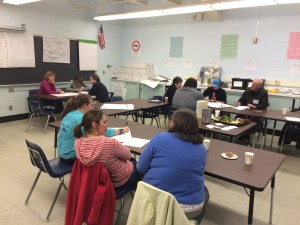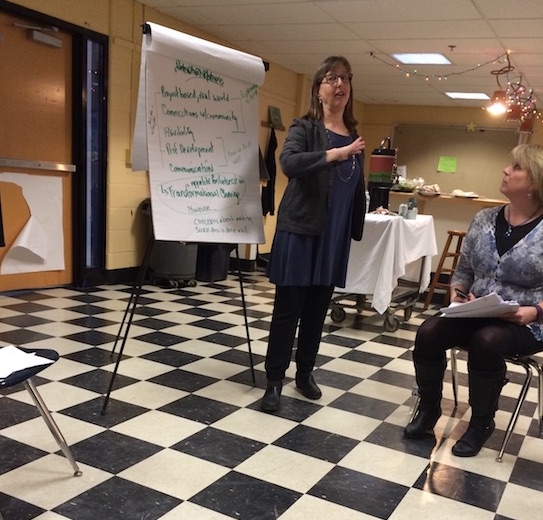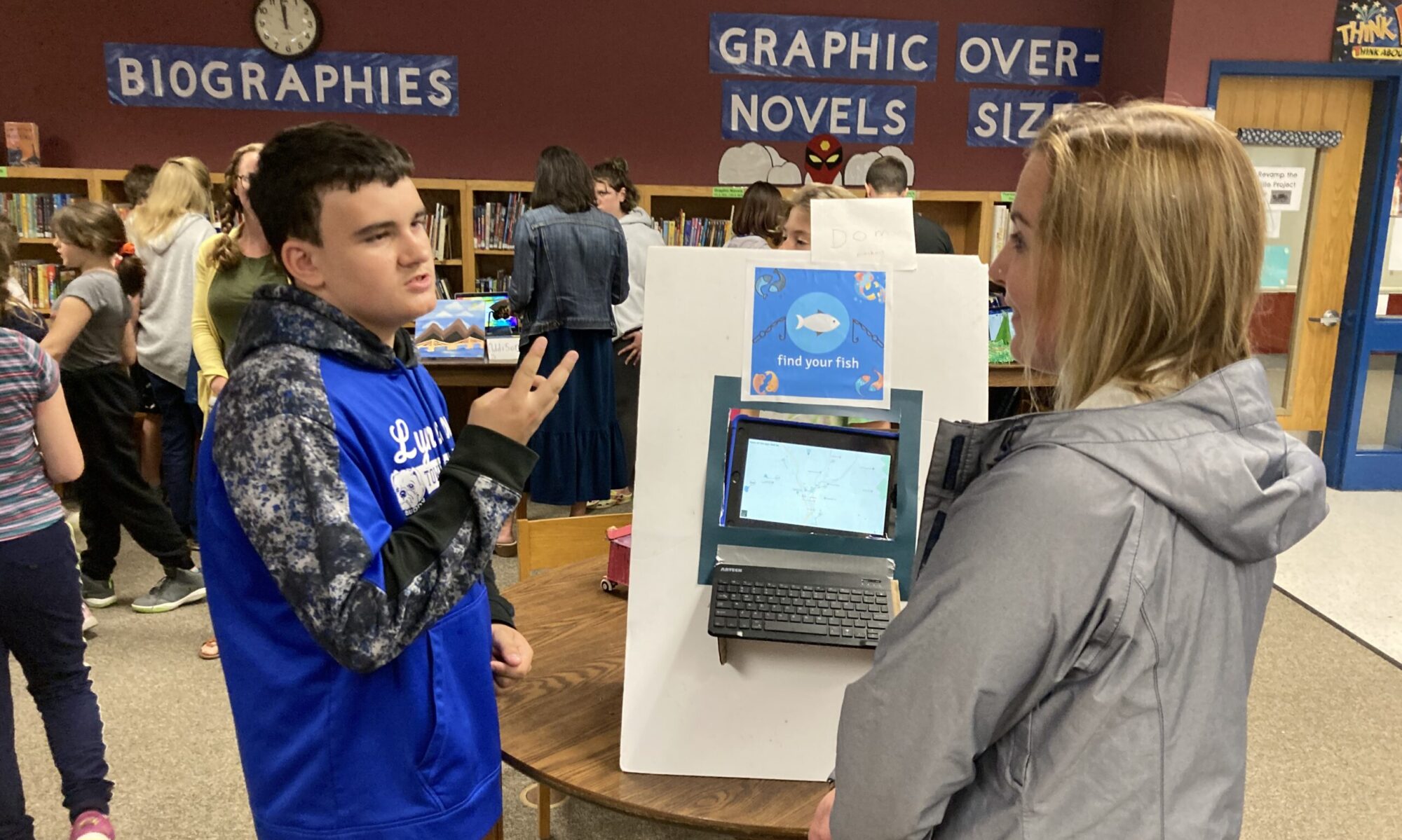4 lessons learned
![]() A few months back, I wrote about how the Washington West Supervisory Union (WWSU) here in Vermont had initiated a series of conversations with the community with a kick-off film screening and discussion. I noted that “the most exciting thing about the conversation was the feeling in the room that we, as a community, could transform our schools. People were clearly ready and willing to have a conversation, and the general vibe was that we wanted to find a way to empower students to do great things within and beyond our schools.”
A few months back, I wrote about how the Washington West Supervisory Union (WWSU) here in Vermont had initiated a series of conversations with the community with a kick-off film screening and discussion. I noted that “the most exciting thing about the conversation was the feeling in the room that we, as a community, could transform our schools. People were clearly ready and willing to have a conversation, and the general vibe was that we wanted to find a way to empower students to do great things within and beyond our schools.”
I’m happy to report that those positive feelings of community engagement coalesced into a sustained and profound exercise in participatory democracy. More than 100 community members came together during four two-hour Monday evenings in March. They worked in groups to examine their own beliefs, learn about school transformation efforts already underway, and ultimately provide recommendations that will be considered by the school system’s leadership team.
Each group was co-facilitated by a high school student and community member. I co-facilitated a group and here are four things I learned from the inside.
1. If you host it, they will come
The first clue that something special was happening came as I arrived at the full-day facilitator training session. There were nearly 30 people there, a mix of community members and high school students. I mean, I’m totally into this stuff, and even I had to consider the commitment carefully. It would tally up to over 20 hours of work, including weeknight evenings away from my family. And it wouldn’t be easy work — it would involve complex discussions about potentially fraught issues. Yet there was a (large) room full of people ready to dig in.
The facilitator training, provided by Everyday Democracy, addressed general principles of facilitation and walked through key parts of the facilitator guide. It quickly became clear that this was an extraordinary group, with wide representation of the community.
The students were particularly impressive. At one point the issue of student voice came up, and several students provided passionate and convincing rationales for the benefits of giving students more control over their education. When I was in high school, I was relatively clueless and uninterested, whereas these students were fearless, knowledgeable, opinionated, and articulate.
The community at large responded to the call for dialogue, with more than 100 people committing to the “all or none” terms of the invite. I think it’s a testament to the organization, support, and quality of facilitation that participants came back week after week.

2. Surprising consensus on the need for transformation
The four sessions were designed as a progression:
- Session 1 – Consider beliefs and values of our group and the community
- Session 2 – Learn about WWSU initiatives already underway
- Session 3 – Focus on issues of equity
- Session 4 – Craft recommendations for WWSU leadership
In my group, from the first activity in which we shared personal stories about our educational experiences, a clear narrative emerged. Almost every single story highlighted an experience that was extraordinary because we had been genuinely engaged and had learned something applicable to real life. There was a certain collective sadness that these experiences were so few during compulsory education careers spanning more than a decade. And an optimism that those positive stories could serve as windows into what students could and should be experiencing every day in a transformed system.
Our group’s convictions were mirrored by data from a community-wide survey, where the same themes emerged: our schools needed to focus on hands-on, project-based experiences, directed by students and connected to the community, facilitated by educators who were skilled at building relationships with students and helping them learn how to learn.
In the ensuing sessions this convergence only grew stronger.
- In Session 2 we saw that WWSU was already moving in these directions, as we explored district initiatives and student profiles related to personalized learning, proficiency-based education, flexible pathways, and student voice.
- In Session 3 we recognized that equity considerations were central to this transformation – both as the rationale for radical change and a key design challenge.
- And in Session 4, we developed recommendations largely based on these themes.
Participants viewed the above video to learn about what WWSU has in motion related to personalization of learning. The overwhelming response: yes, more of that, please!
3. The devil is in the details
Developing concrete recommendations was difficult. Our group had clearly shared values and strong support for the general direction that WWSU is headed. Yet it was hard to move from general consensus to effectively crafting actionable policy proposals. Although part of the challenge may have been the short time frame (within the final, two hour session), the bigger issues were a lack of context and limited educational expertise.
In terms of context, although we had learned a lot together in the first three sessions, there were still pieces of history and nuance that were impossible to establish in six hours. We didn’t need to unpack the WWSU Action Plan, but it was hard to know what was possible without knowing which strategies had been tried before; what was mandated and prohibited by federal, state and local law; and how politics and personal dynamics affected these issues.
As for expertise, everybody has experience with education but personal familiarity is different than mastery of the professional knowledge base. In some cases this allowed people to be creative, such as imagining schools with permeable walls and flexible schedules. In other cases it would have been helpful to have access to research and practical knowledge related to things like tracking, project-based curriculum, or systemic barriers to relationship building.
In my view, with more access to expertise to build a deeper understanding, and perhaps more time, our recommendations could have been more specific and relevant. Another route would be to provide detailed proposals for groups to consider and ask for reactions to focus questions or choices between alternatives.
4. Follow-through is critical
After Session 4, a few facilitators came together to sort through the recommendations of all of the groups. We approached the task like qualitative researchers, coding recommendations and collaborating in order to calibrate.

The process unveiled two major messages from the community:
- Strong support for a transformation toward personalized learning and flexible pathways that was already underway.
- Acknowledgement that in order to be successful, this transformation was going to require bold shifts in school structures and corresponding support for educators.
One facilitator shared a parting remark from one of her participants: “I am done with meetings. If nothing comes of this, I won’t be participating in anything like this again.”
To me, this statement encapsulates the profound power of the Community Conversation process, and perhaps personalized learning writ large.
There is a lot of untapped energy and thirst for transformation in our communities: people are ready to contribute, either through deliberation and recommendations or by working with students via internships, service learning, and community-based projects. Many if not most of them may feel that much of their own schooling, in traditional structures, was a waste of time. They don’t want to waste any more time unless something truly transformational is at hand.
WWSU has done a great thing by inviting the community into a dialogue about the future of education.
The process itself has produced benefits in that participants have become knowledgeable and excited and are surely spreading the word.
I am sincerely hopeful that the leadership can harness this energy to support and sustain true transformation. As a community member, I will work to hold them to it and help in any way I can.


#vted: Facilitating community conversations about education at #WWSU https://t.co/EUDzFXrFaD https://t.co/TQQIX5HfkR
Reflections from #wwsu community conversations about education https://t.co/QW2IpWaLla # @edglossary @sueamccormack
RT @WWSU_Curriculum: Reflections from #wwsu community conversations about education https://t.co/QW2IpWaLla # @edglossary @sueamccormack
4 Lessons Learned: Facilitating Community Conversations About Education https://t.co/3nn55giyTf via @lifelegeros https://t.co/UpxD1JPNOY